Best plants for small gardens: 22 stunning choices for compact plots
Include the best plants for small gardens in your flowerbeds, borders and pots, and your compact plot will be filled with interesting foliage, color and scent
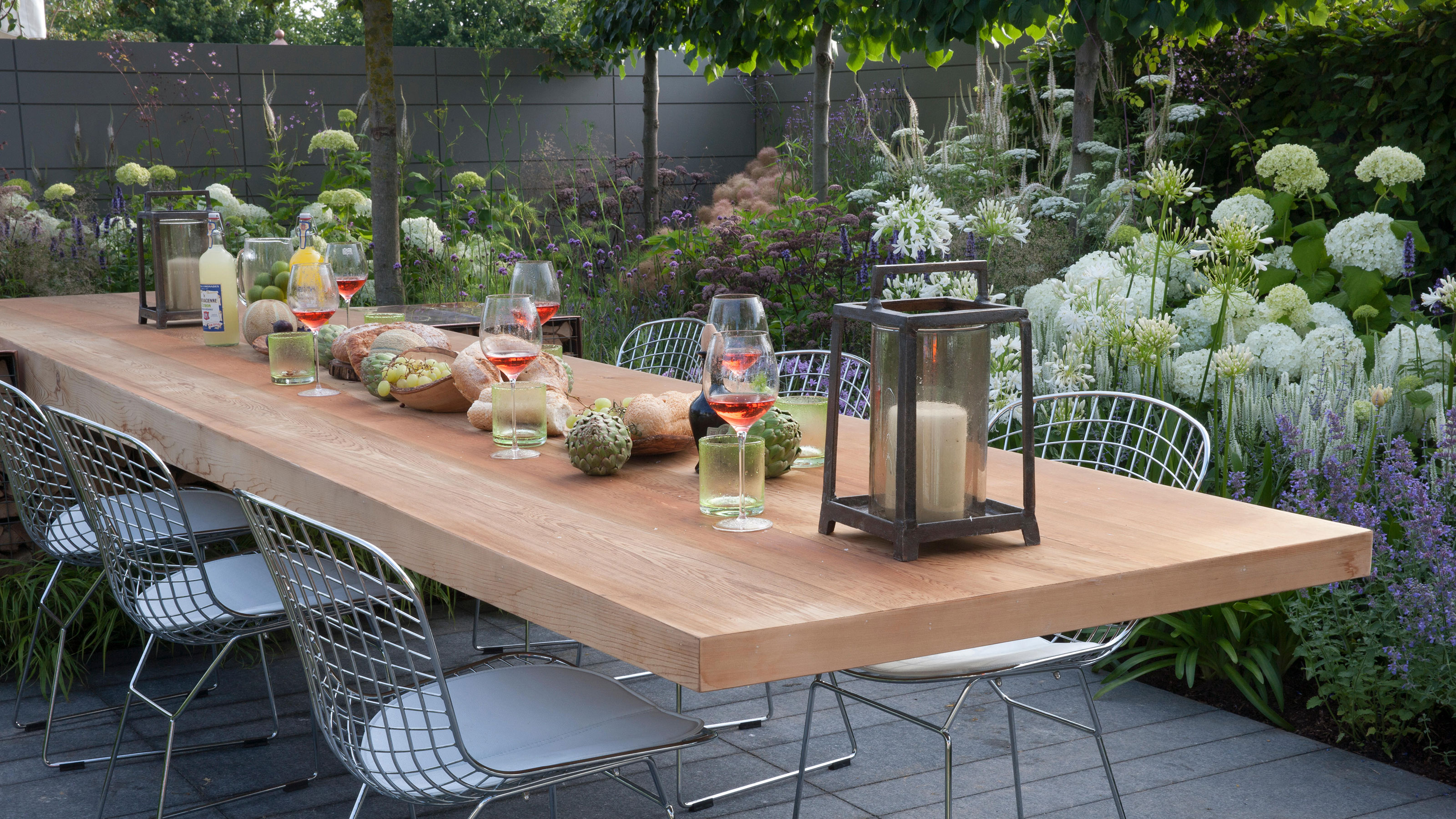
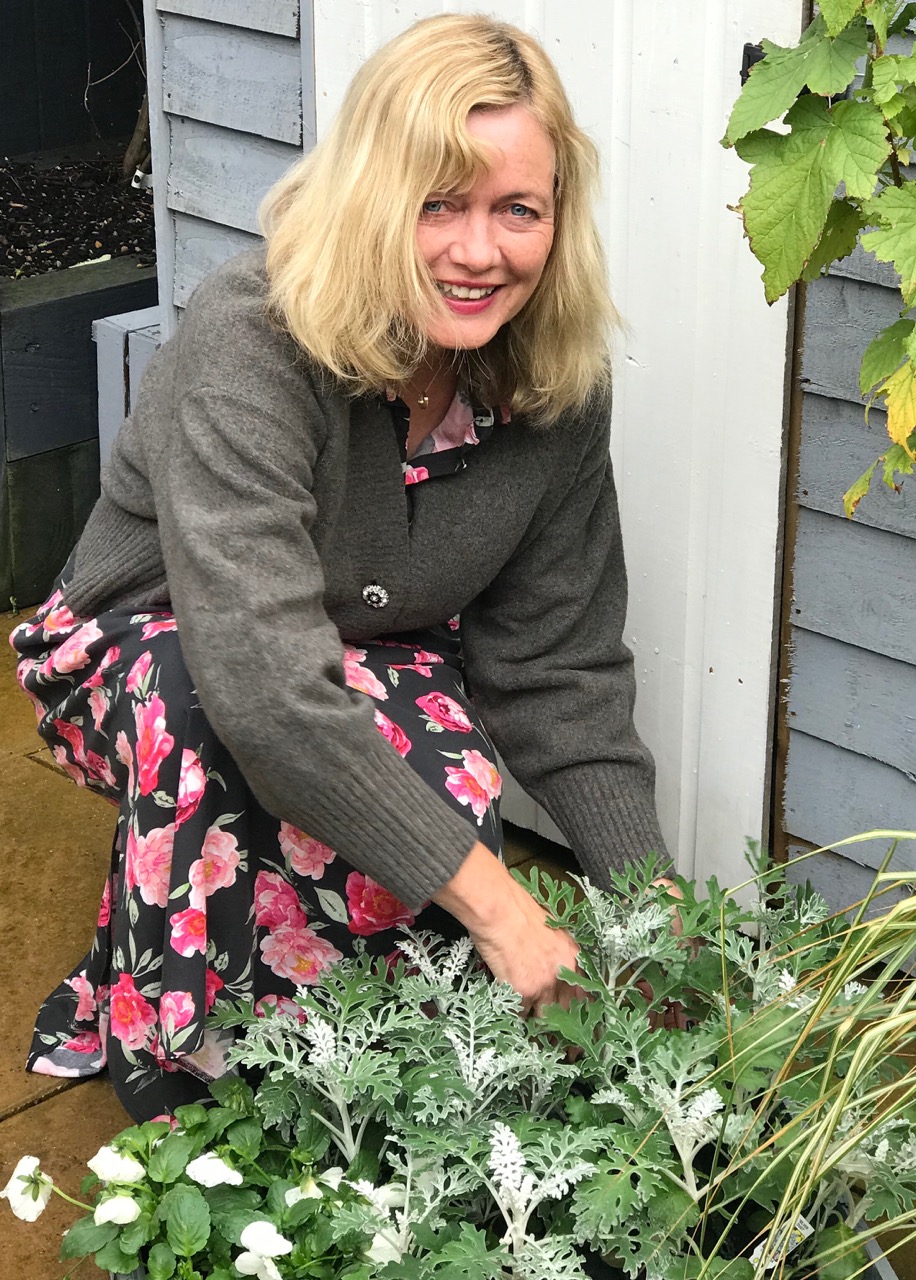
The best plants for small gardens have to work extra hard. This could mean that they have a long flowering time, or that they stay attractive in more than one season, perhaps with dazzling spring or summer flowers followed by interesting seed heads, brilliant autumn foliage and beautiful winter berries.
When every single plant counts, it is important to ensure that they are all going to thrive, so first of all, make sure you know what will grow happily in your garden. In the US, this means knowing the USDA hardiness zone, and in the UK, some plants’ success can depend on whether you live in the north or south of the country.
A good way to work out the right plants for your small garden is to take a stroll around your local neighborhood. Have a look at the ones which are obviously flourishing. Photograph any favourites and use an app such as PlantSnap or iNaturalist for identification.
Before you go plant shopping, sketch out a quick plan of the space and work out what is going to be planted where. Although it is tempting to squeeze in as many favorites as possible, less is more when it comes to creating small garden ideas with maximum impact. As well as plants which hug the ground, think about vertical planting for walls and fences to maximize every inch of space.
Aim for a balance of elements, bearing in mind that a variety of textural plants will add depth, foliage can create continuity and a small tree will create a focal point and draw the eye upwards. 'Having a small garden doesn't mean you have to go for small plants,' suggests Lizzie Fox of The Rose Press Garden. 'I'd always recommend choosing plants with impact, color and structure.'
Add interest to your plot with the best plants for small gardens
To help you find the top performers for compact spaces, we've put together our edit of the best plants for small gardens. Including these options means you'll be able to enjoy plenty of color and stunning foliage in your less-than-large plot.
1. Pittosporum tenuifolium ‘Tom Thumb’
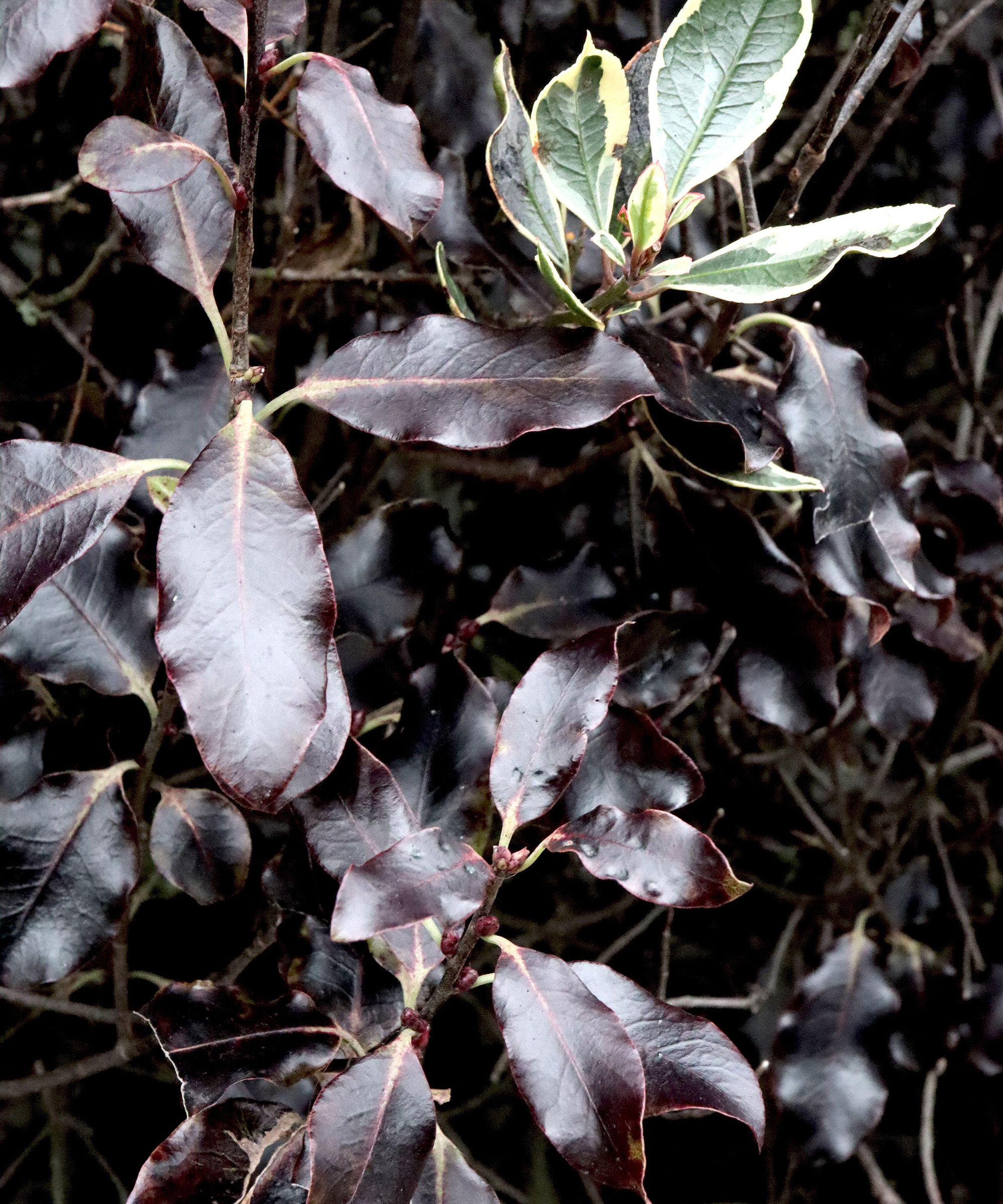
A compact, evergreen shrub which has wavy edged, plum coloured leaves and dark grey or black young stems. It’s a good way to ensure year-round color (although the pretty leaves turn green if it’s grown in shady areas).
Another variety, ‘Variegatum’ has light green and white tipped leaves, which add interest. Grow in a sheltered spot away from strong winds.
2. Sarcococca confusa
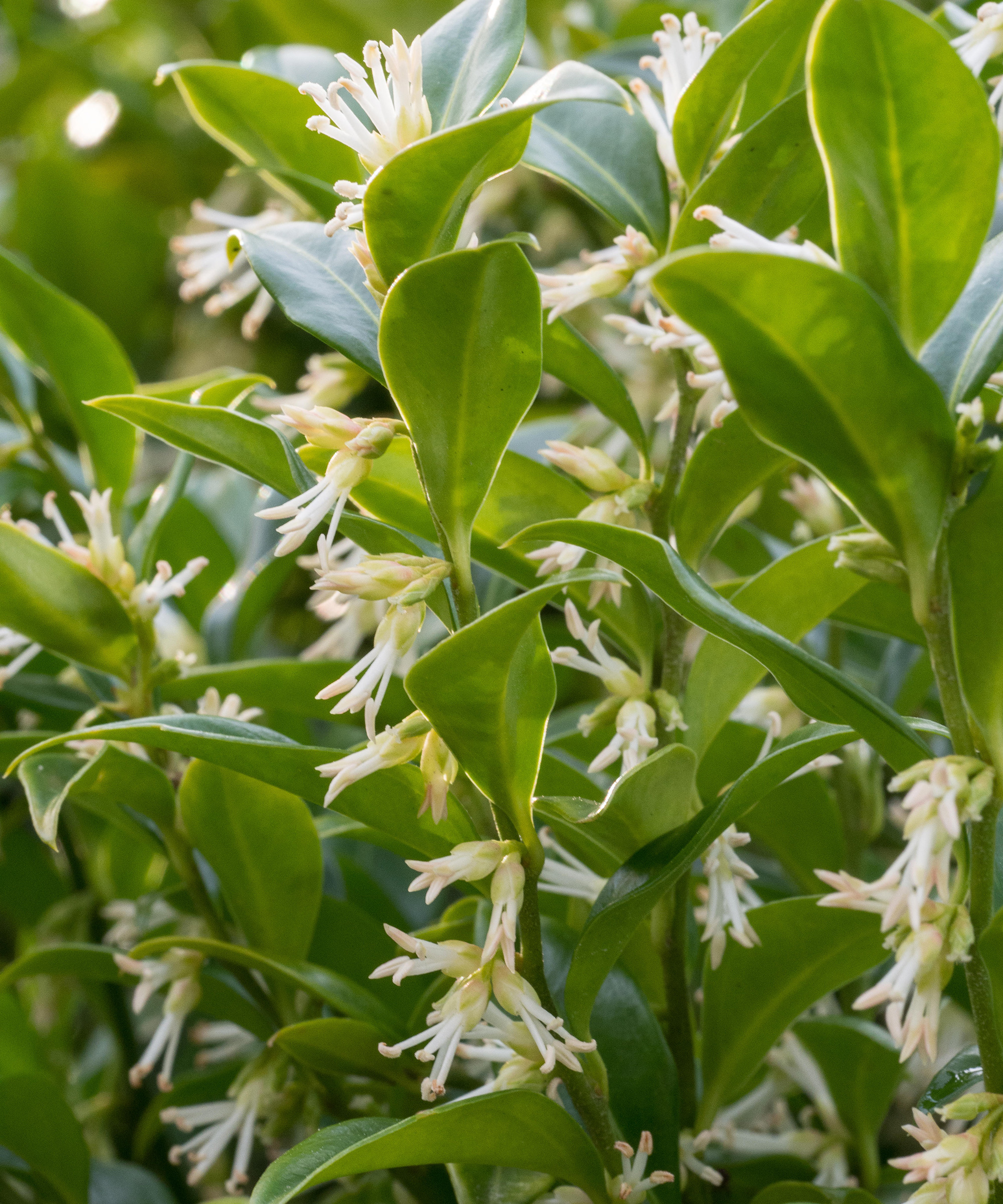
Flowering in late winter or early spring, this shrub has evergreen foliage and knock-your-socks-off scented blooms followed by purple berries. It’s an easy-care plant, which grows in almost any soil in sun or partial shade. It needs a light trim after flowering to ensure that it stays bushy and compact for a small space.
3. Hydrangea arborescens ‘Annabelle’
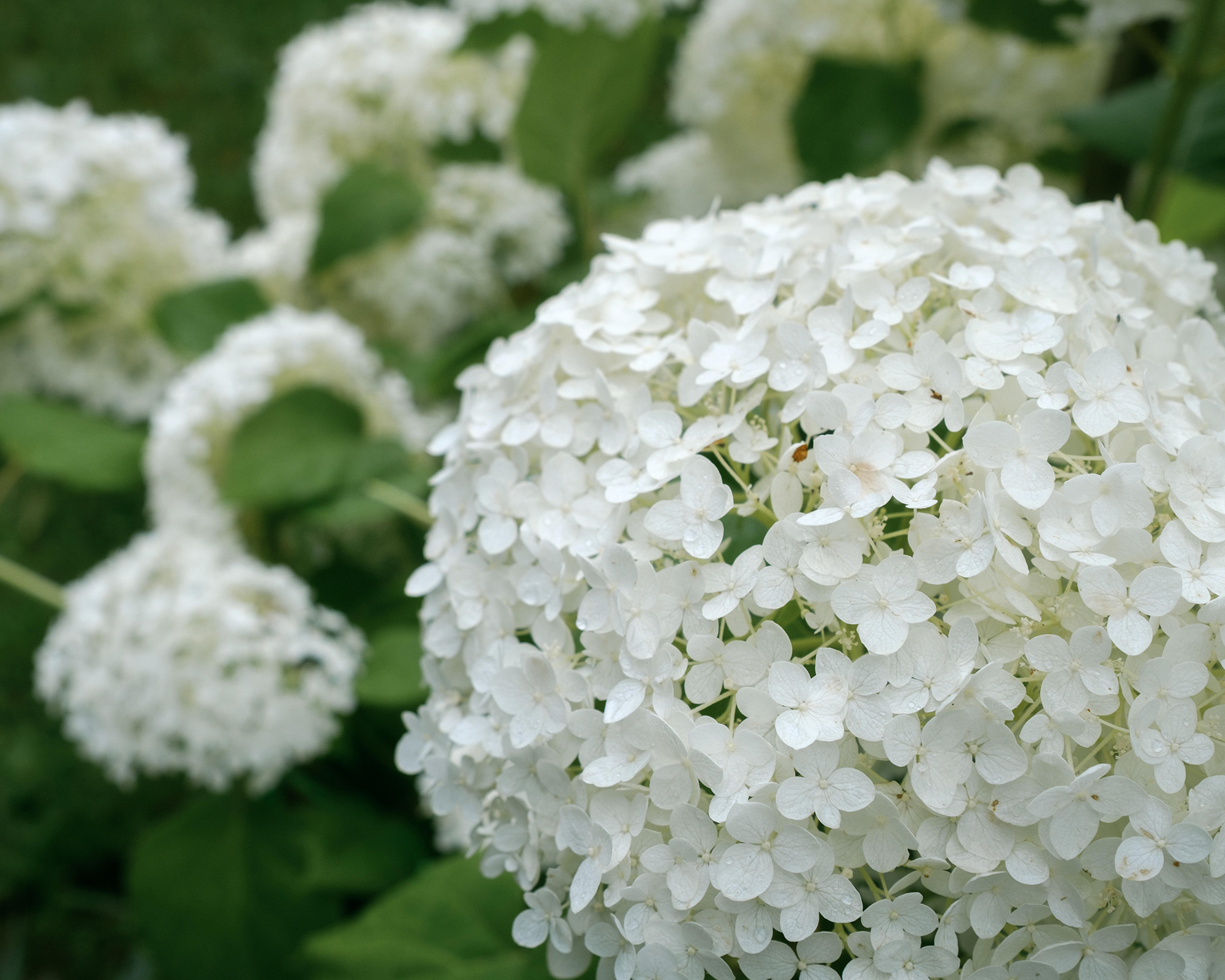
Proof that large flowers can look good in small gardens, this elegant deciduous shrub, native to North America, has gorgeous creamy white globe-shaped flowers on upright stems. As autumn comes, they turn pale lime green, and the seed heads can be left on during the winter months.
For best results with how to grow hydrangeas, plant in full sun or part shade, and water them regularly in dry periods. Younger plants might need some support with stakes, so the flower heads don’t flop. They can be grown in a pot, but will be happier in the ground.
4. Tibetan cherry tree
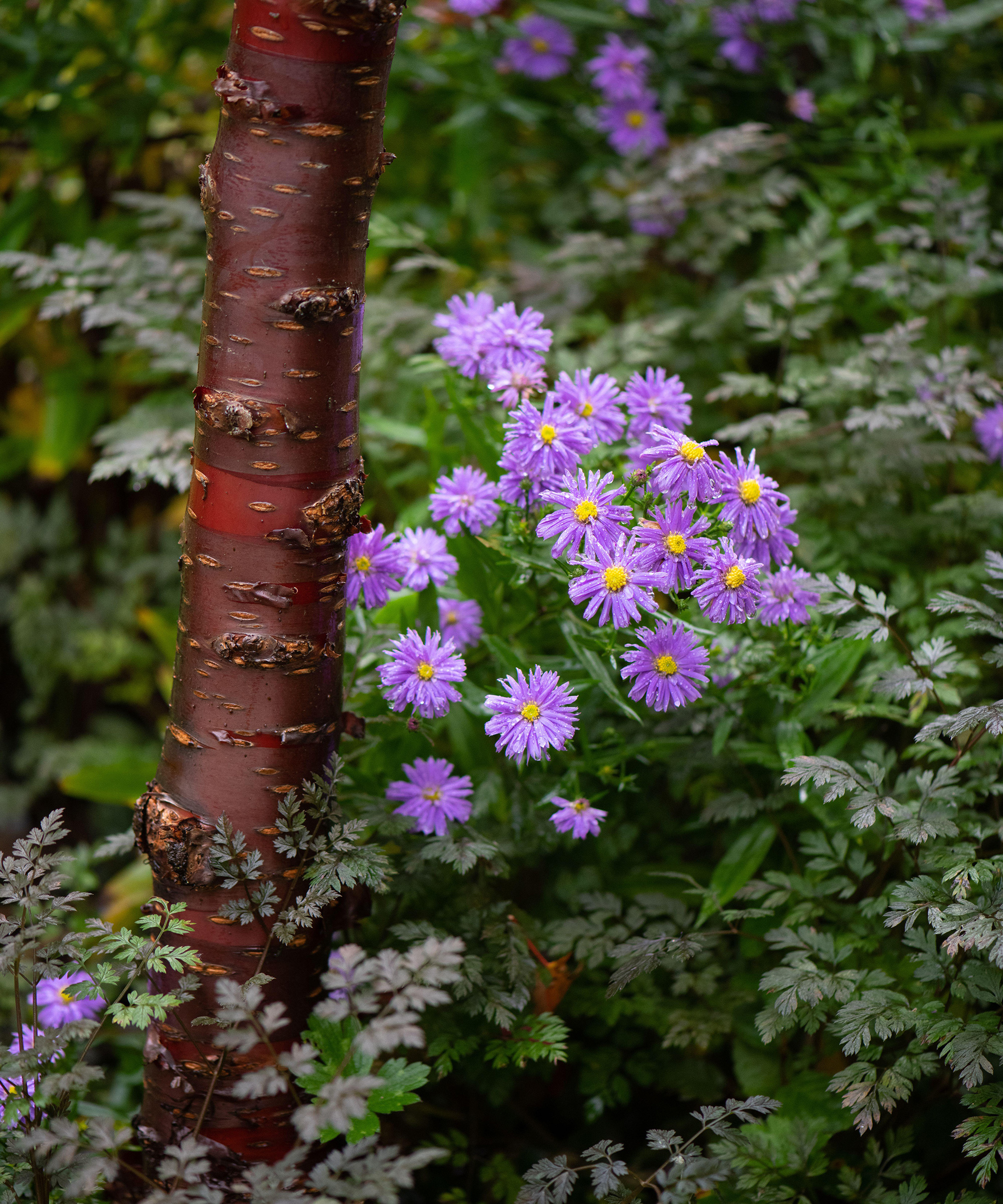
This is one of the best trees for small gardens as it has year-round interest with polished, conker brown tactile bark which peels in autumn to reveal a rich bronze red underneath. It has oval dark green leaves and small white flowers in late spring with yellow fall foliage.
Choose a single stem tree and it will not grow taller than around 16ft (5m) in 20 years. Grows well in most conditions, but avoid wet or chalky areas. Ideal for urban gardens as it tolerates pollution well.
5. Betula Jacquemontii
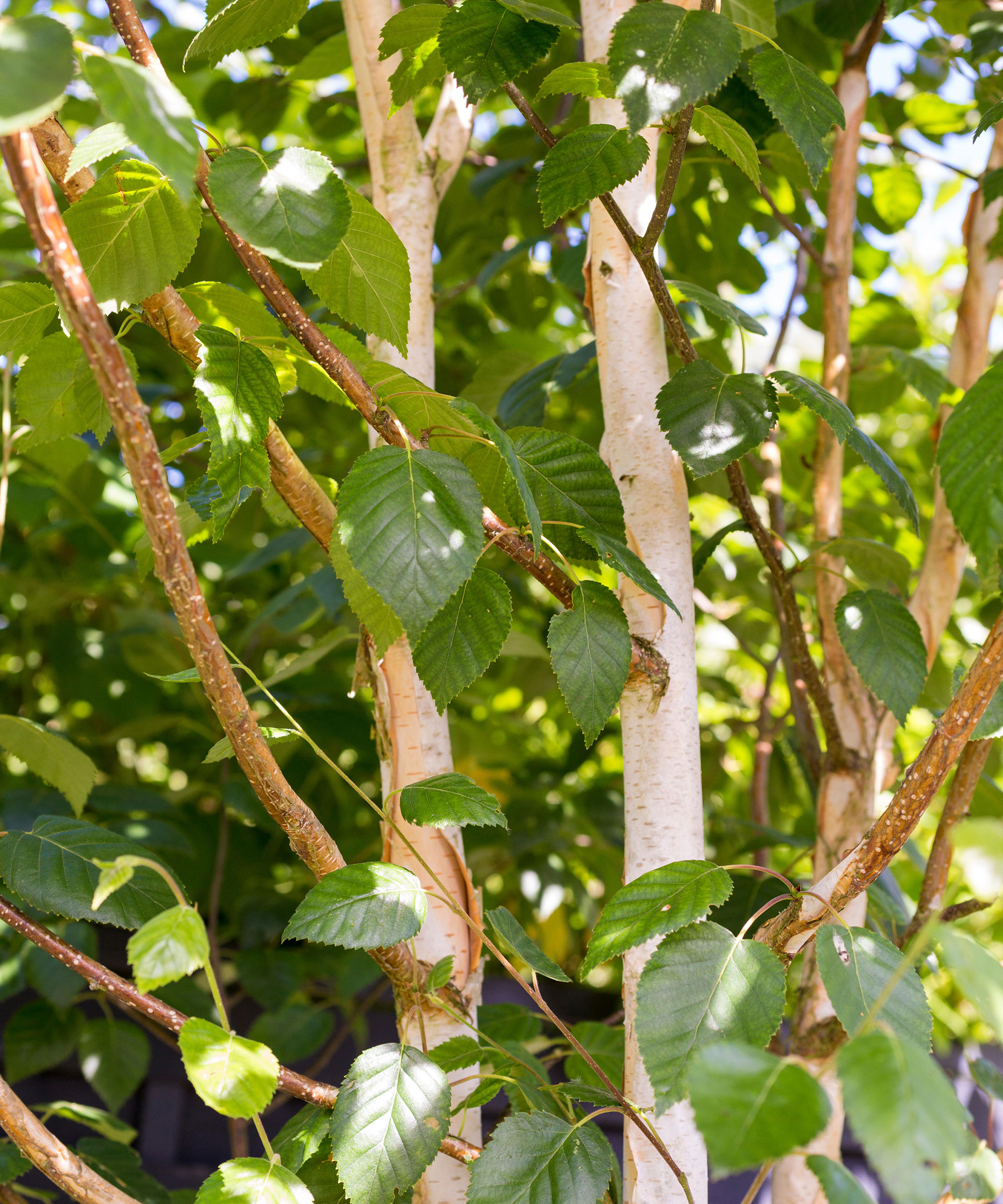
Even the smallest gardens should include one tree, and this one, also known as the silver birch, is a great choice. It's often used by garden designers for its striking looks and due to the fact that it's one of the best low maintenance trees.
Silver birch lose their zingy green leaves in winter, but the pure white bark comes into its own in frosty landscapes and adds welcome lightness on grey days.
6. Amelanchier Lamarkii
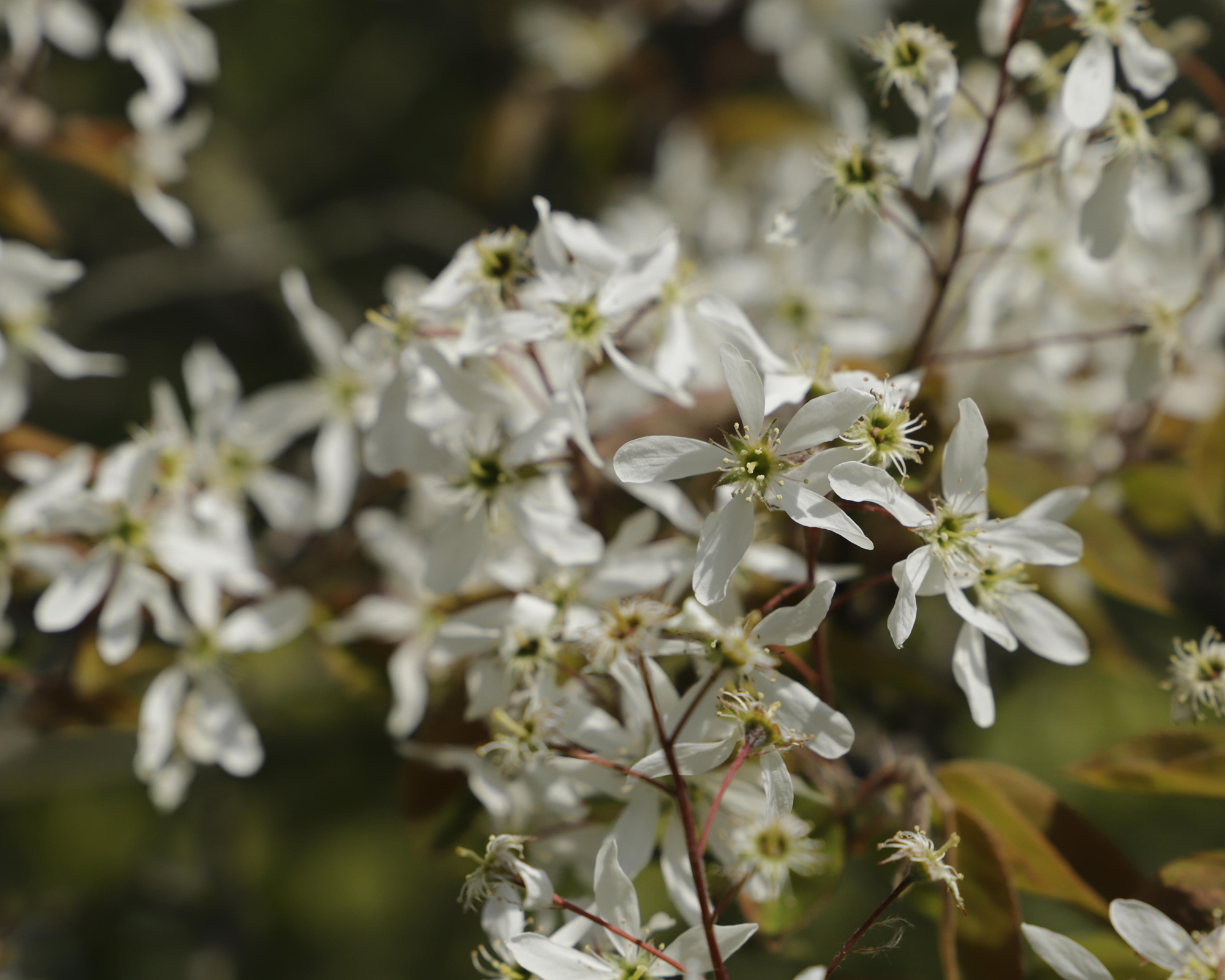
One for blossom-lovers, this tree, sometimes better known as serviceberry or juneberry to US gardeners, has swathes of pretty white star-shaped flowers on soft copper coloured foliage in April and May.
It is a slim, upright tree, so the shape suits bijoux gardens. It grows in damp conditions and most soil types, although it prefers clay or sandy ones. It is native to North America, and also grows very well in the UK.
Want more suggestions for the best flowering trees? You'll find plenty in our guide.
7. Acer
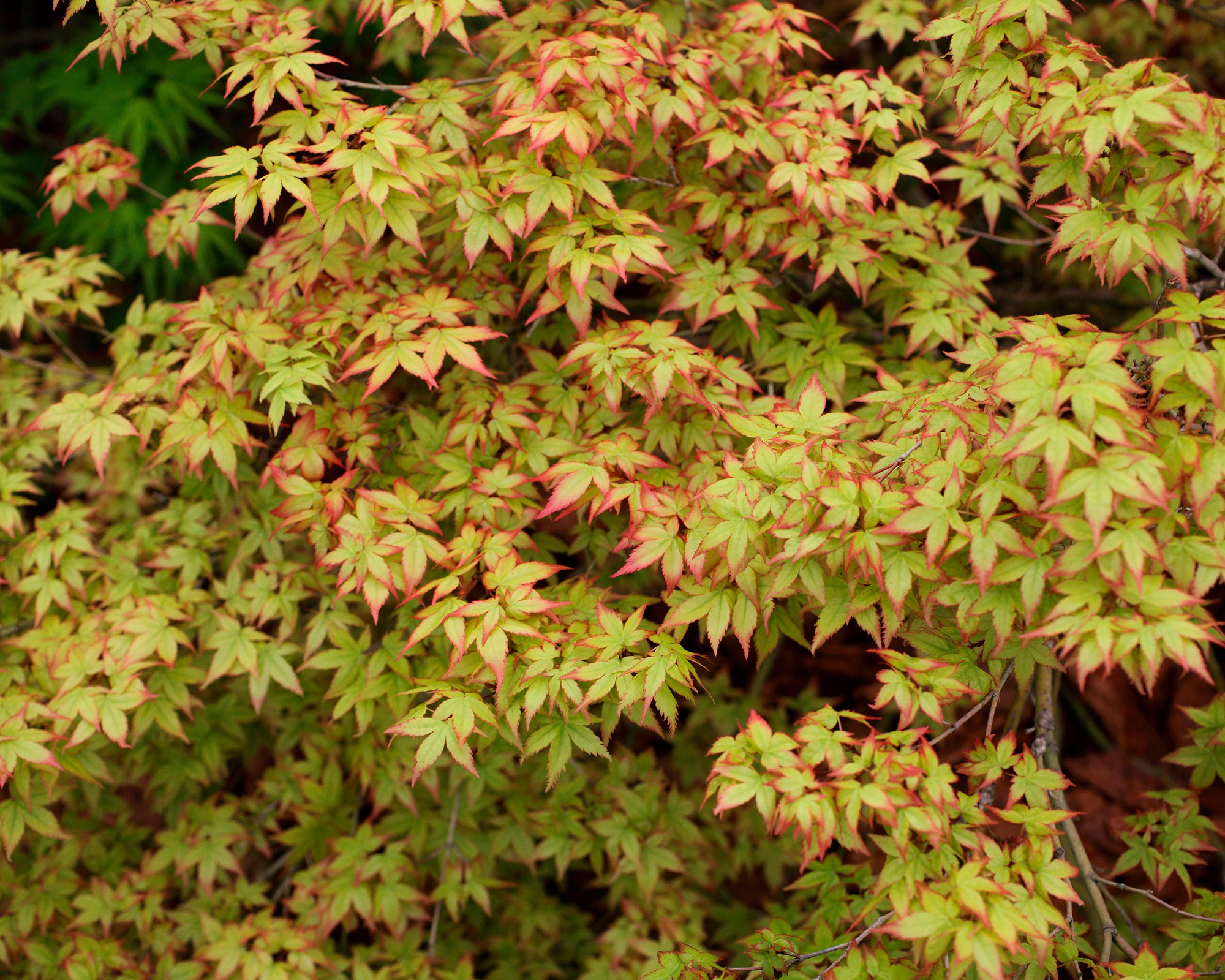
Acer palmatum 'Little Princess'
A common sight in small Japanese gardens, acers are unbeatable for their incredible autumn color. There are many different varieties of these elegant trees, including plenty which are perfect for small spaces.
Choose acer atropupureum for trees with red or purple leaves, and acer dissectum for fresh green foliage. For the tiniest garden, try compact Acer palmatum ‘Little Princess,’ which won’t grow taller than 5ft (1.5m), and has ever-changing foliage through the seasons. For a red zinger, Acer palmatum dissectum ‘Garnet’ is stunning, and does not exceed 6.5ft (2m) tall.
If you're learning how to grow acers, it's important to water them regularly during spring and late summer and stick to the same routine as this suits their shallow root systems. Grow in a sheltered spot in sun or part shade.
8. Crab apple
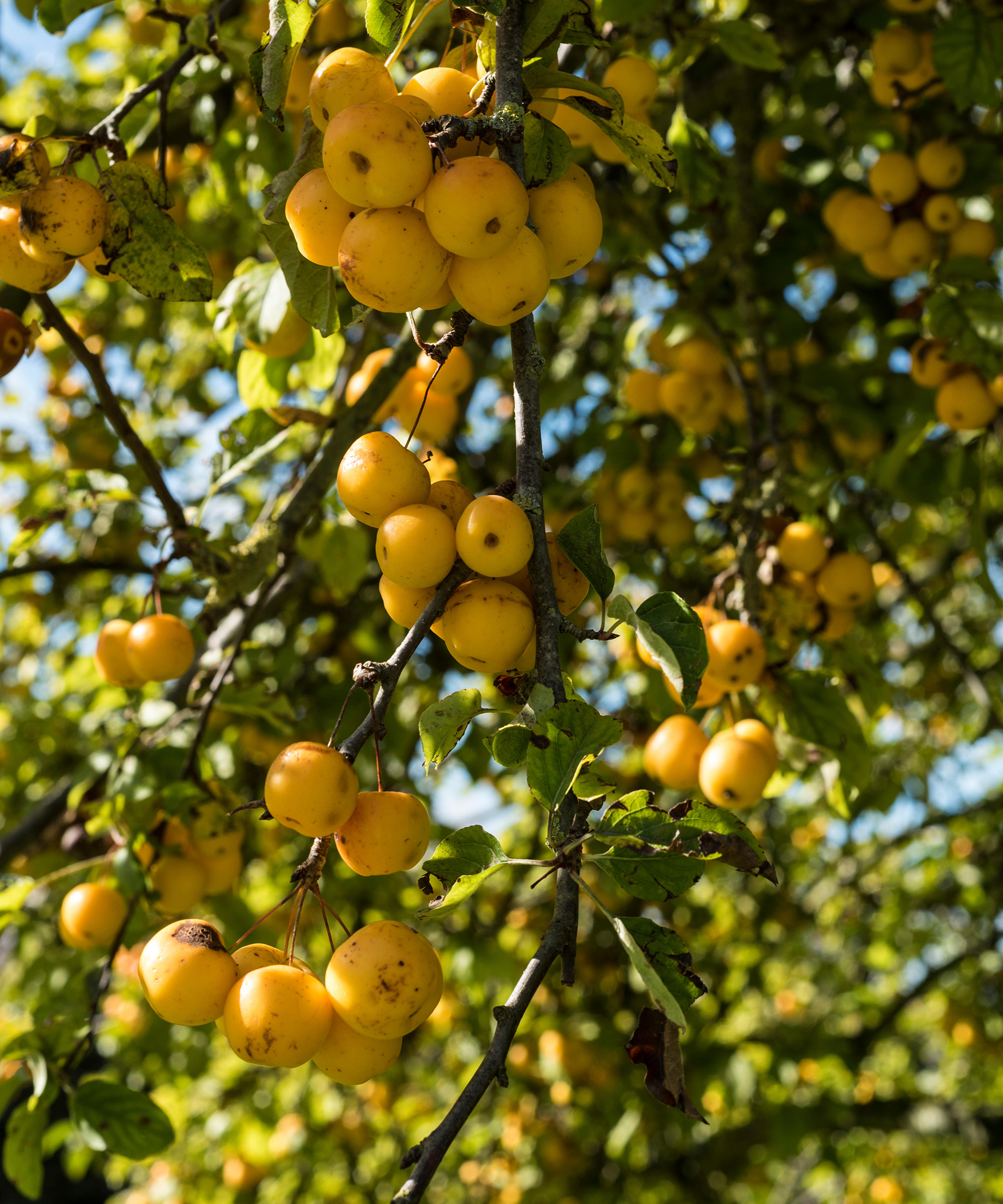
Malus ‘Butterball’
You may not have room for an orchard, but that’s no reason to forego the satisfying sight of a loaded fruit tree. Some varieties of crab apple trees are perfectly proportioned for a small garden, and they offer pretty blossom in spring and jewel bright fruits which stay on the tree in autumn and winter.
An ideal variety to consider for your small garden layout ideas is the dwarf Malus toringo ‘Aros’ which has lush purple foliage and dark red fruits. It will not grow taller than 10ft (3m) and is happy in a pot. Malus ‘Butterball’ will produce multiple tiny golden apples which can be used to make jelly – or gin and the ultimate height is 13ft (4m). Grow crab apple trees in full sun or part shade. In winter, remove damaged branches, or ones that cross over.
9. Polystichum setiferum (fern)
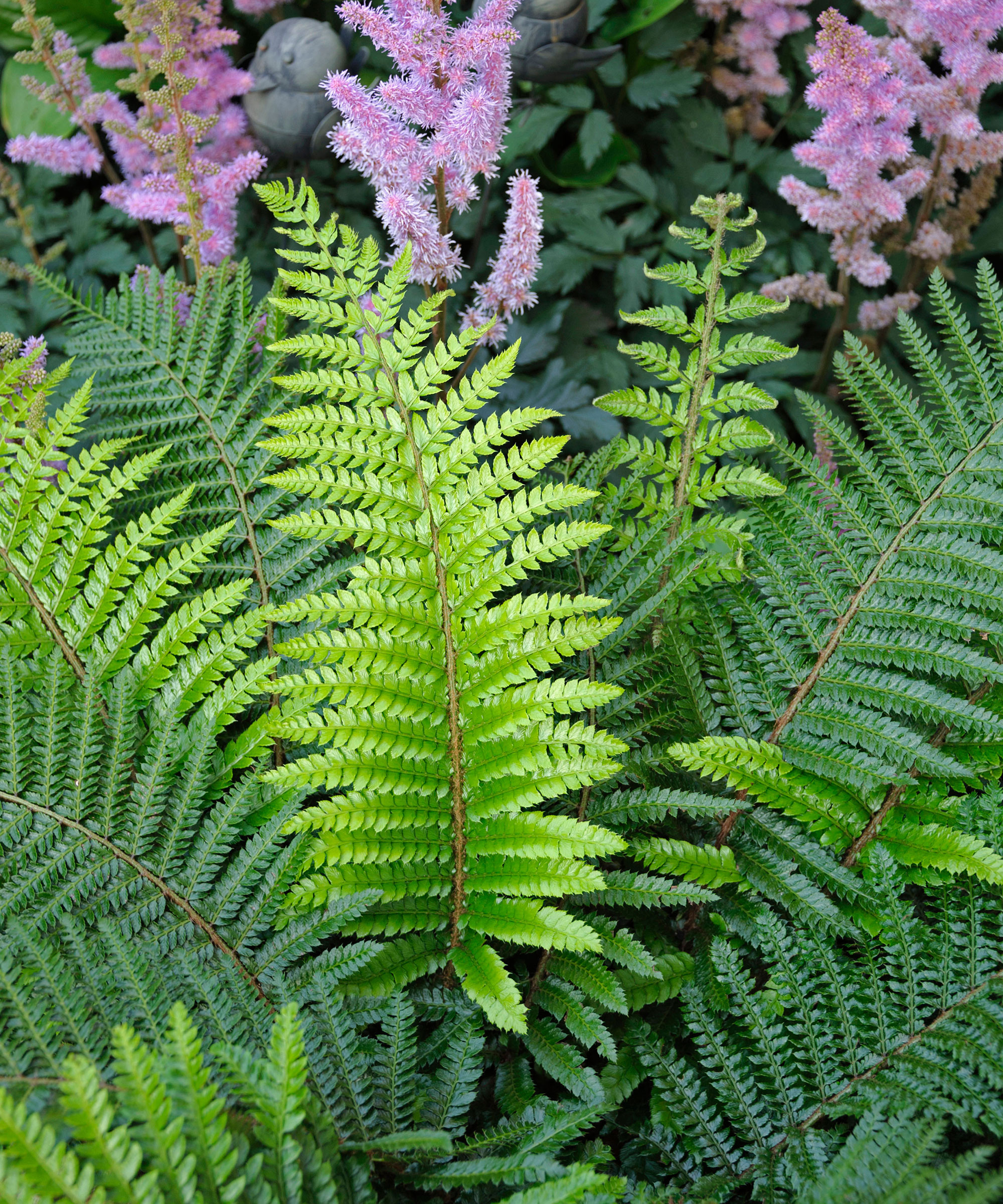
If you have a shady small plot, a gracefully arching fern should be on your list of the best plants for small gardens, suggests garden designer David Chanell of Arlo & Bloom.
This is a hardy variety, with feathery, evergreen fronds in a fresh, uplifting green. They look good planted together in a group, but as this fern grows up to 4ft (1.2m) tall, it could work well in a pot as a centrepiece, perhaps with some tropical plants nearby. Keep the soil well-watered and moist.
There are plenty of tips on how to grow ferns in our guide, too.
10. Heuchera
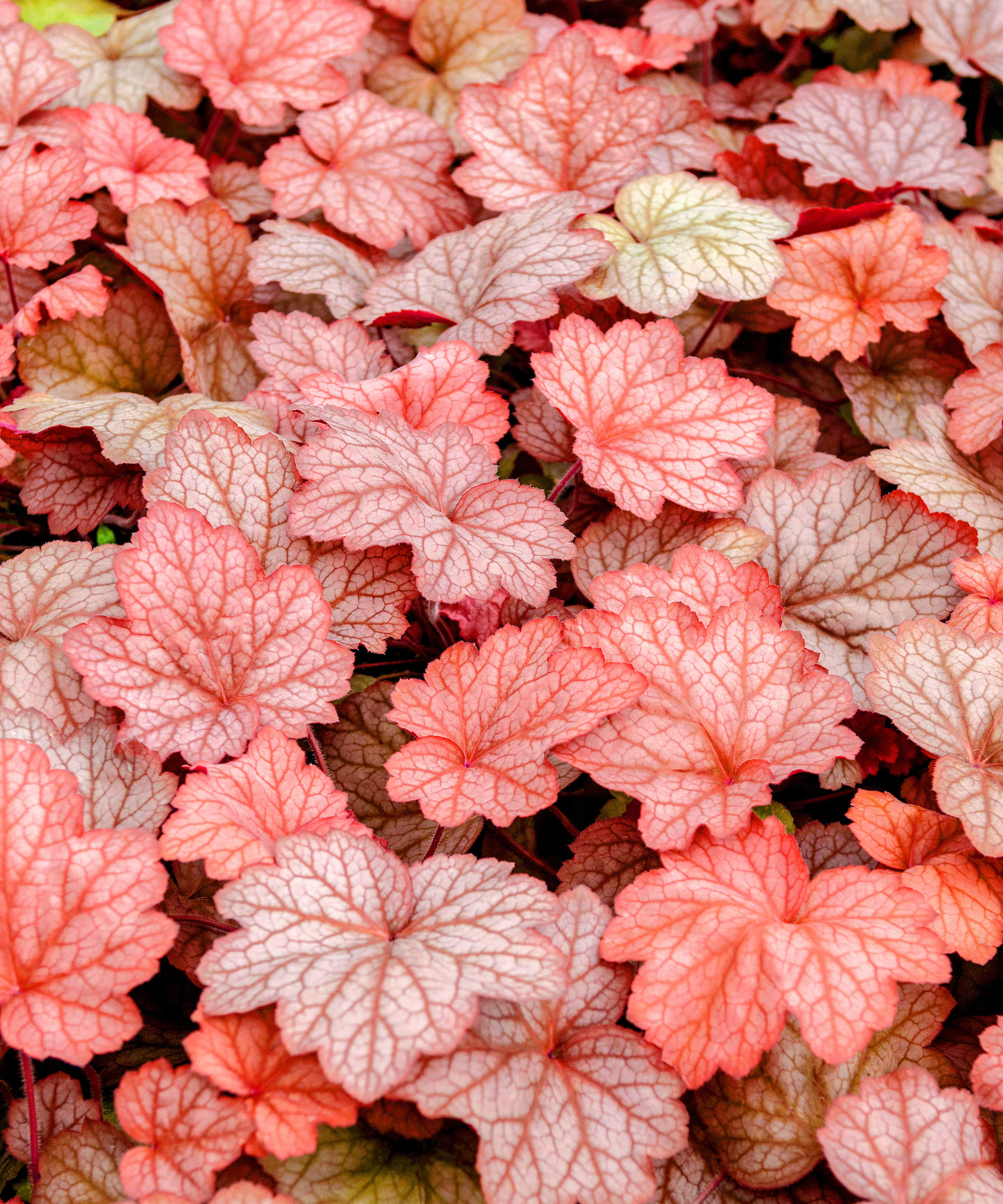
Heuchera 'Georgia Peach'
Proof that the best foliage plants can be just as decorative as flowers, these hardworking evergreen perennials, sometimes called coral bells, work in pots or borders, and there are some gorgeous colors and varieties to lift a small garden.
These names describe the tones perfectly: Berry Smoothie, Crème Brûlée, Lime Marmalade, Plum Pudding and Blondie, but there are many to choose from, including ‘Georgia Peach’ which is specially bred for hot and humid climates.
Heuchera are native to the woodlands of North America, so they prefer a shady or partly sunny spot. They flower in late spring and early summer, but it’s the fabulously frilly leaves which are the attraction. They grow 12-20in (30-50cm) in bushy mounds, and are resistant to disease, slugs and snails.
11. Molinia
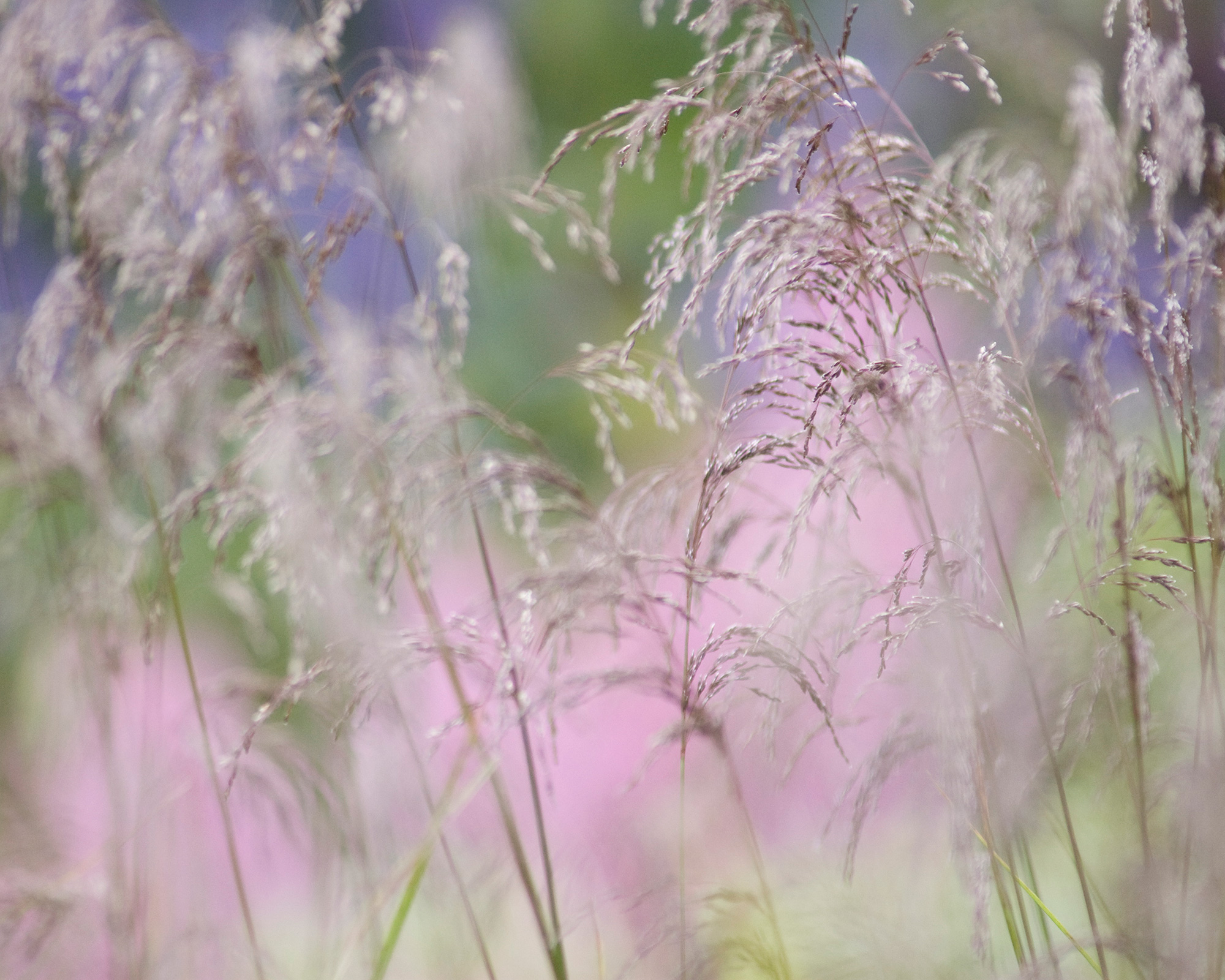
For texture and autumn color, this narrow grass with arching leaves creates a semi see through screen to mask an ugly garden wall or fence, and some swishy movement to break up any solid planting or fencing.
From summer to autumn, it has purple flowerheads, and the stems are mid-green, turning to bleached blonde. Cut it back in the spring, and it will soon grow tall again.
12. Cineraria
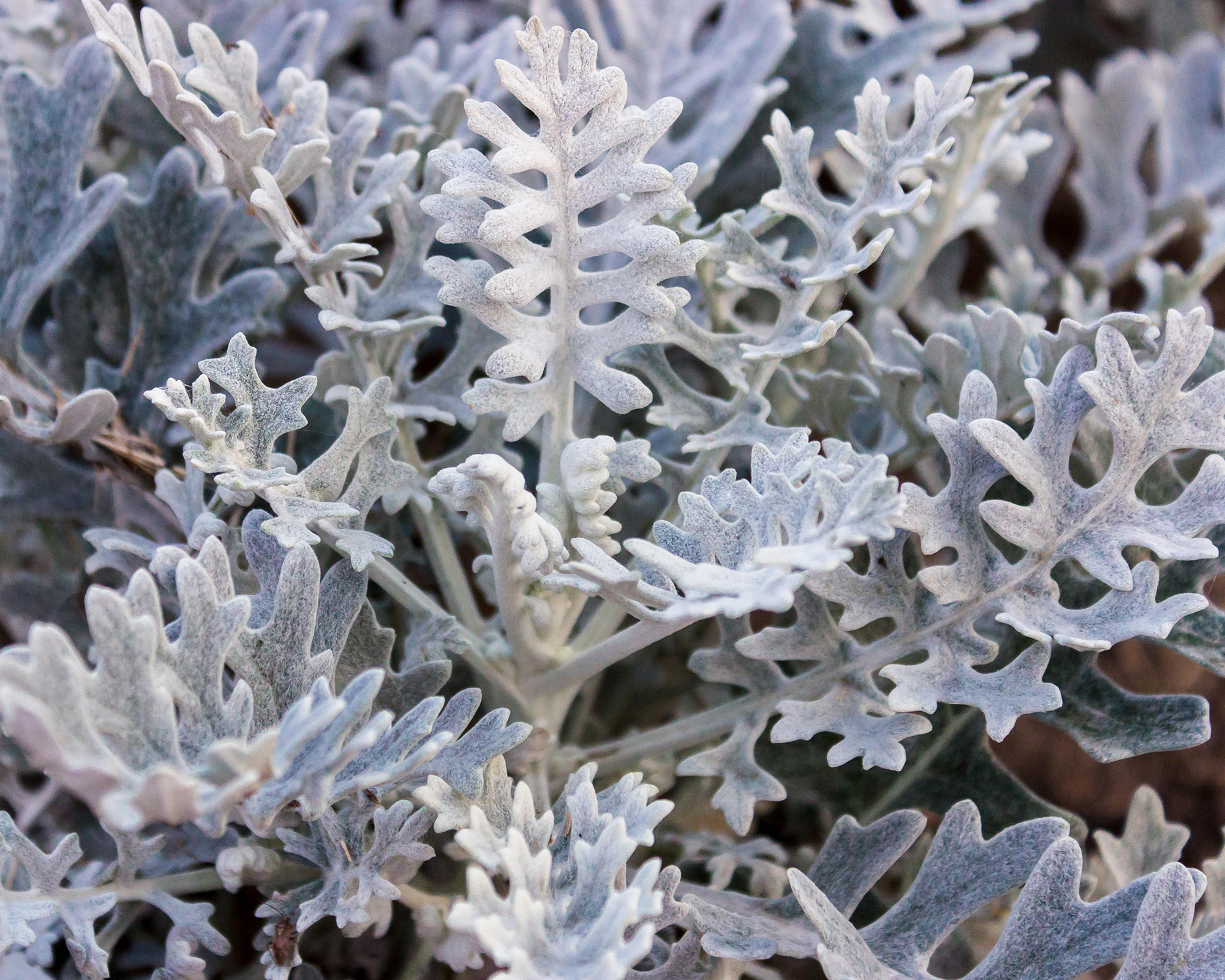
Lizzie Fox of the Rose Press Garden names this as one of her top foliage choices for small spaces. 'It’s a brilliant plant that holds its structure throughout the winter months. It has gorgeous silver foliage which looks amazing set against purple and lilac plants such as lavender and linaria,' she says. The plant has bright yellow flowers, but some growers clip these off when they appear as the pretty leaves are the star of the show.
13. Stipa Tenuissima
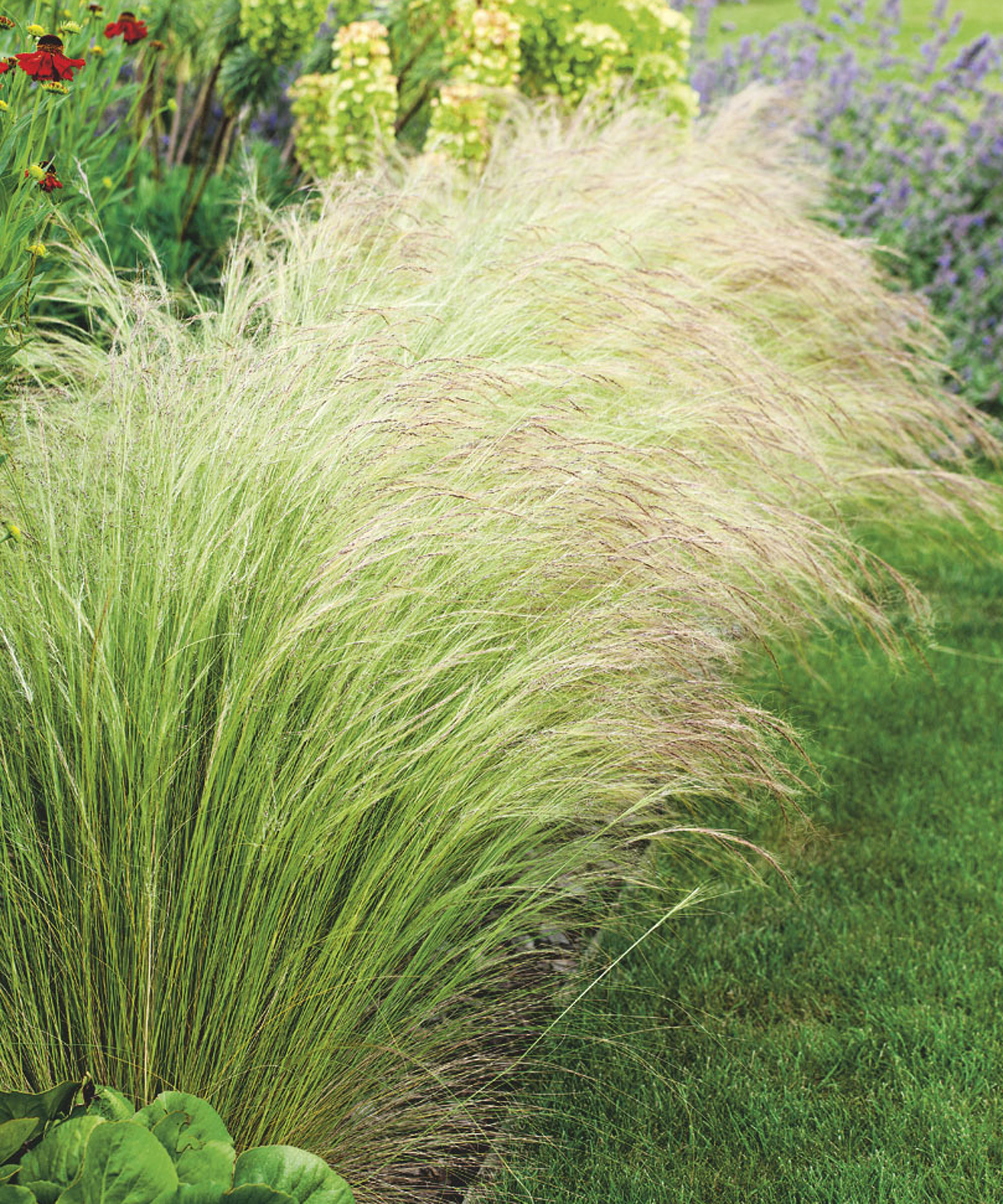
A lovely soft, fluffy grass with fine leaves, and silvery green flowers that have an attractive bleached look as the year progresses. It is a deciduous plant, but you can leave the seed heads into the autumn and winter, and they create a pretty, gauzy veil. It won’t overwhelm a small garden like some grasses, as its ultimate height is only around 24in (60cm).
14. Fatsia Japonica
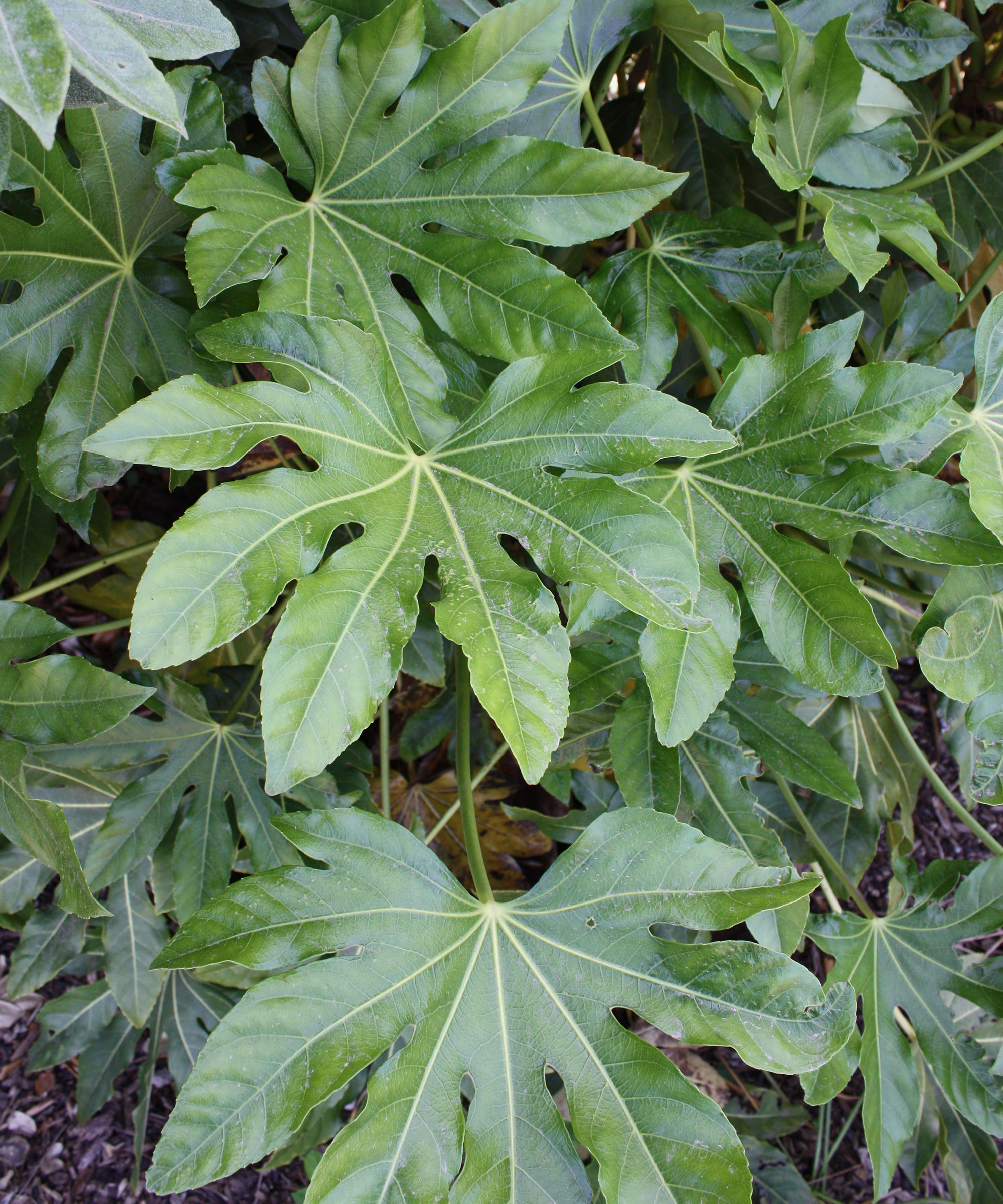
Big glossy, palm-shaped leaves which stay green all year round make this a brilliant choice if you're on the hunt for tropical garden ideas for your small space.
This architectural shrub grows up to 8ft (2.5m) tall, making a lovely focal point. They thrive in shady spots and in dry soil, although they will need watering once a week in the summer.
Remove any brown or scruffy leaves, but apart from that, this is one of the best low maintenance plants you can choose for your plot.
15. Verbena Bonariensis
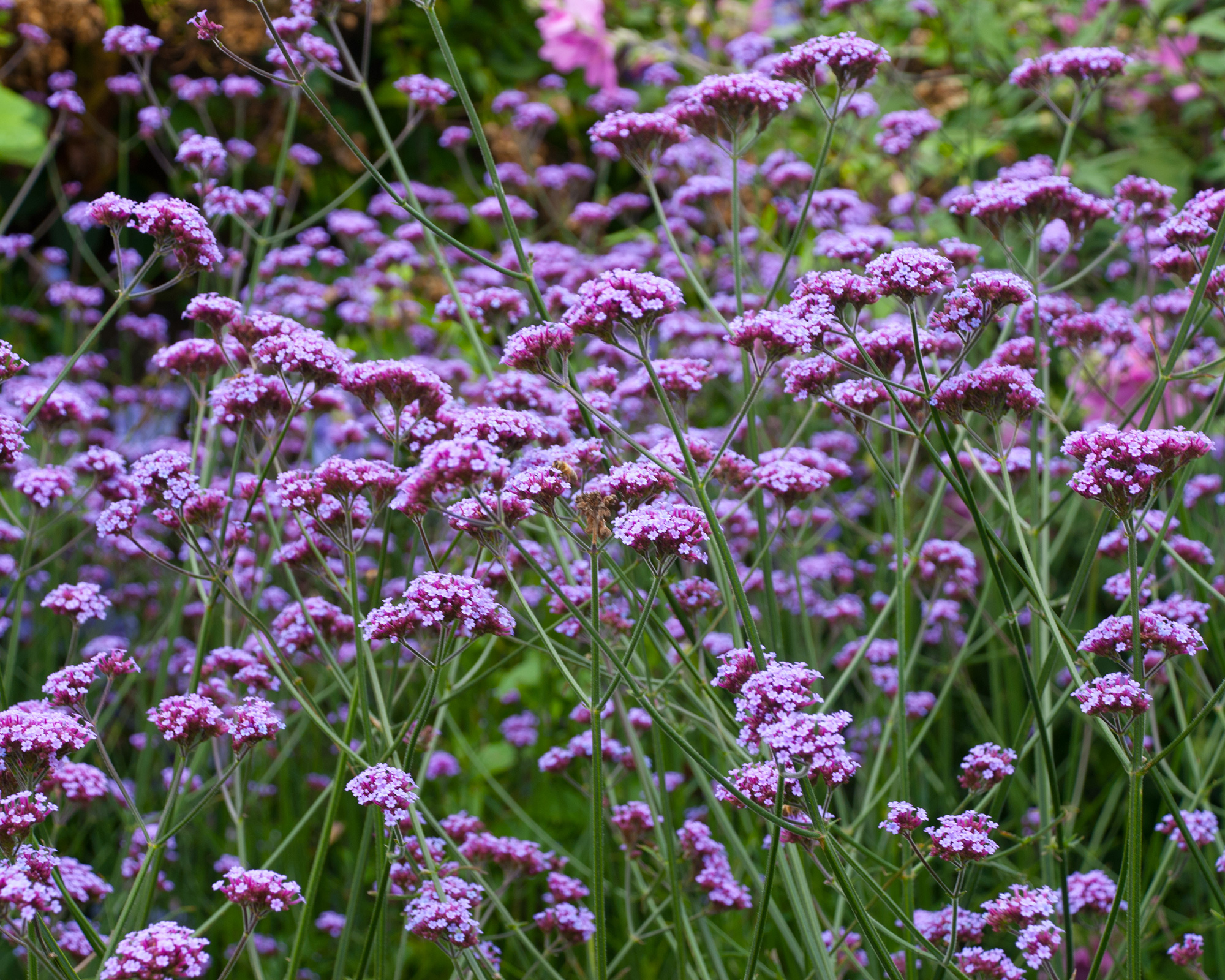
A narrow, upright perennial with a lattice of skinny stems and tiny purple flowers, loved by bees and butterflies. It doesn’t take up much width, but it will grow up to 6.5ft (2m) tall and looks effective grown in a row where it will create semi-transparent garden screening in one season (returning the next year).
Grow it from seed or buy as a small plant. Tolerant of very poor soil and dry conditions.
16. Geranium ‘Rozanne’
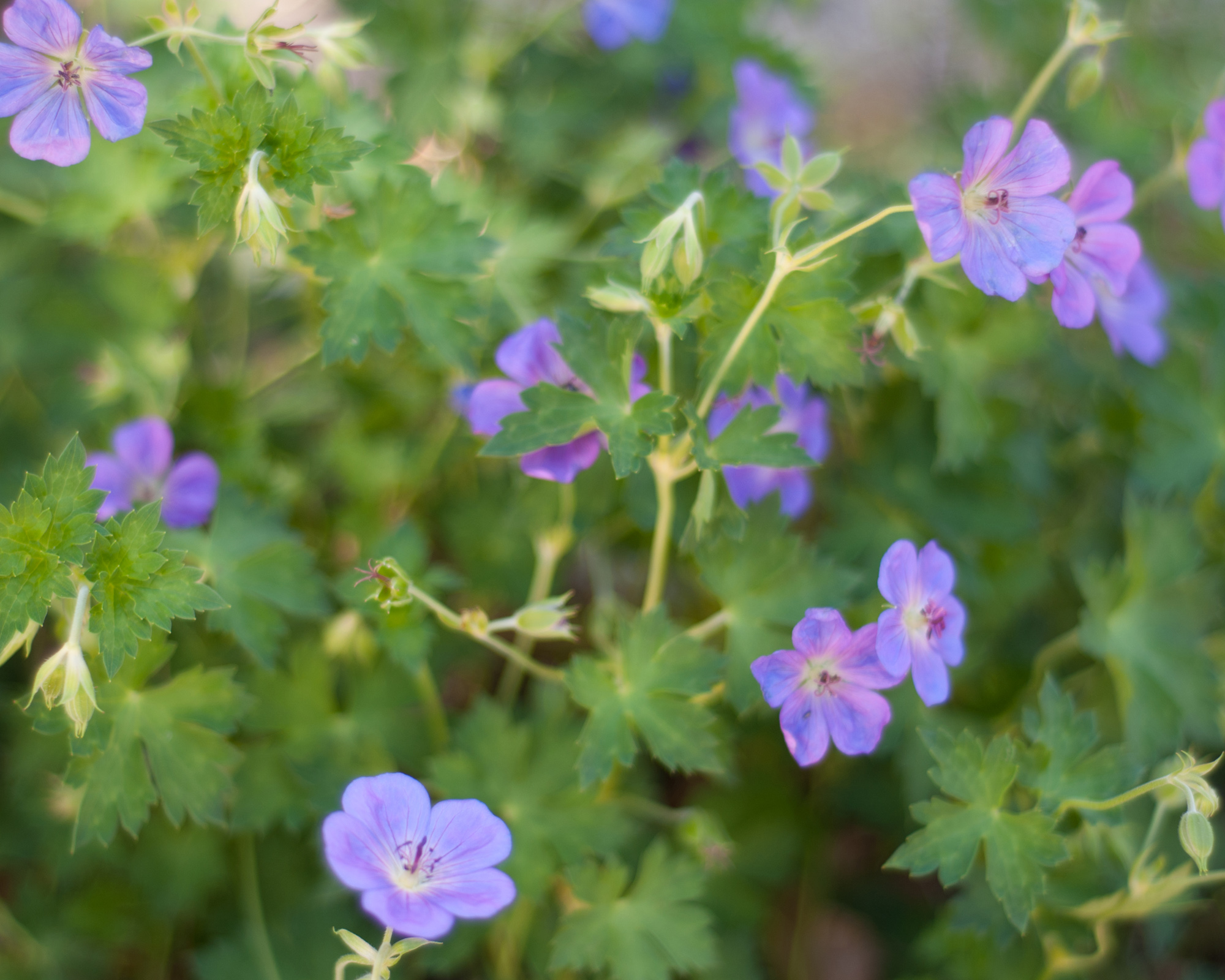
Learn how to grow hardy geraniums and you'll create excellent ground cover with dense foliage and large flowers.
This variety has large, clear blue flowers, and once established it will spread, but it can easily be removed if it starts to overwhelm.
Cut it back after the first flowering and you should get a second flush of flowers in summer. A favourite with garden designers for good reason.
17. Aster ‘Mönch’
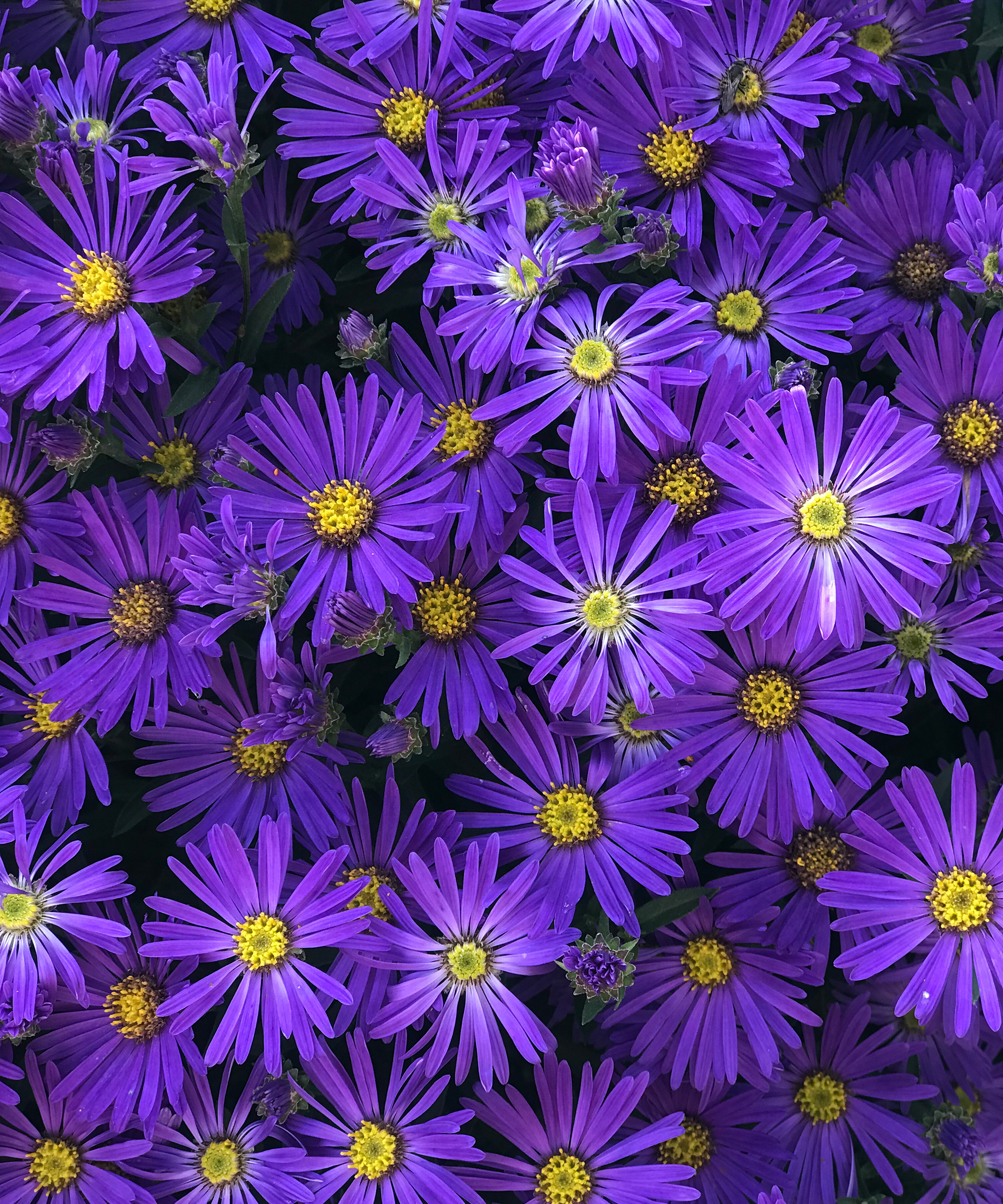
It's certainly worth learning how to grow asters if it means you get to enjoy stunning lavender blue blooms on sturdy foliage like this.
This variety flowers in August/September delivering a lovely mass of jewel color. Grows vigorously in well-drained soil.
For best results, cut the stems to the ground and mulch after flowering to ensure a stellar display the following year.
18. Sedum ‘Purple Emperor’
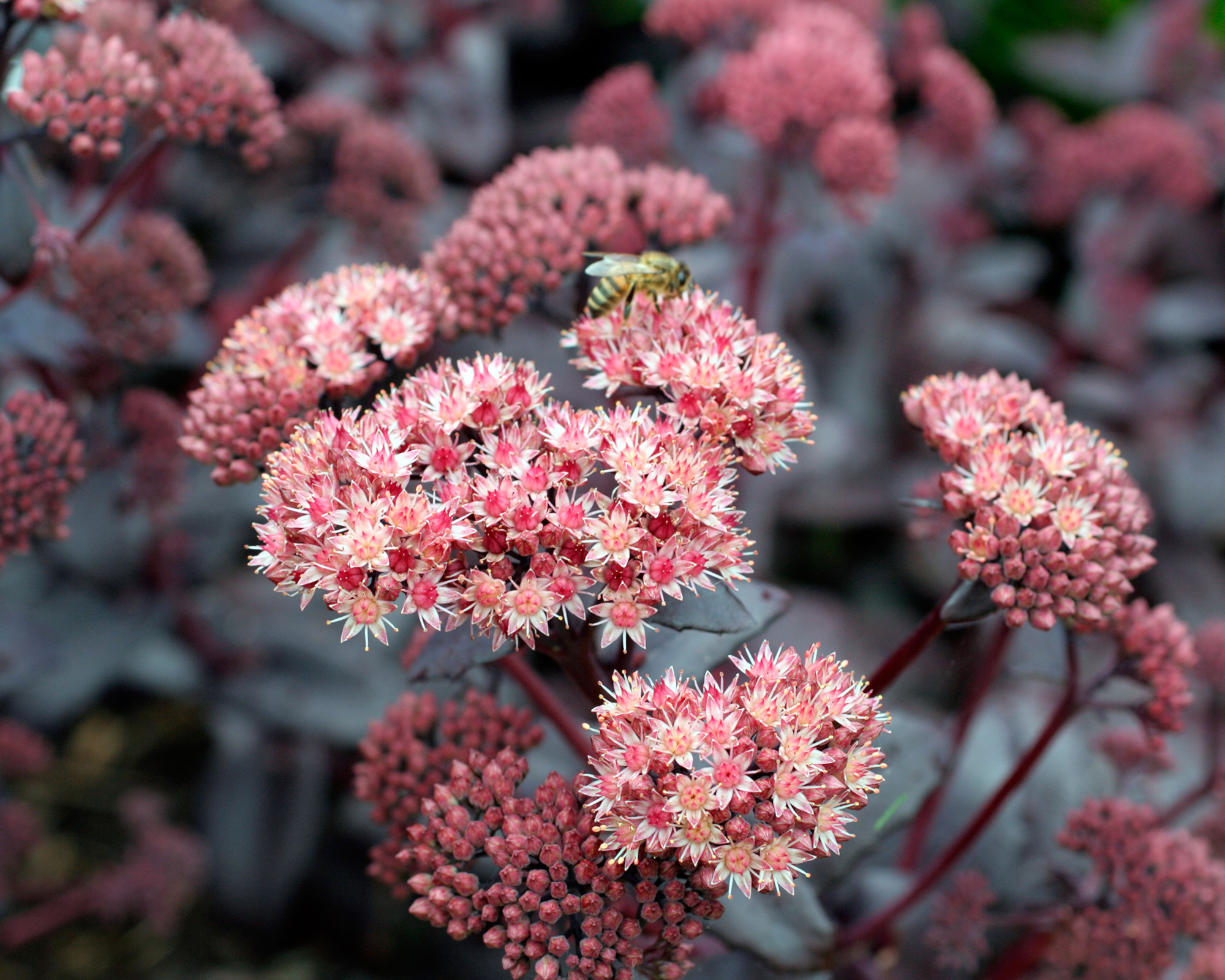
Hot, dry spots can be tough to populate with plants, but Sedum telephium ‘Purple Emperor’ handles it in style. Perfect for late color, flowering August to October, these are upright plants on fleshy, purple brown stems, with wide panicles of rosy pink flowers on maroon bracts.
It’s a super stylish plant which looks good in both modern gardens and more classic spaces. Suitable for US hardiness zones 3-9.
19. Rose ‘Shropshire Lad’
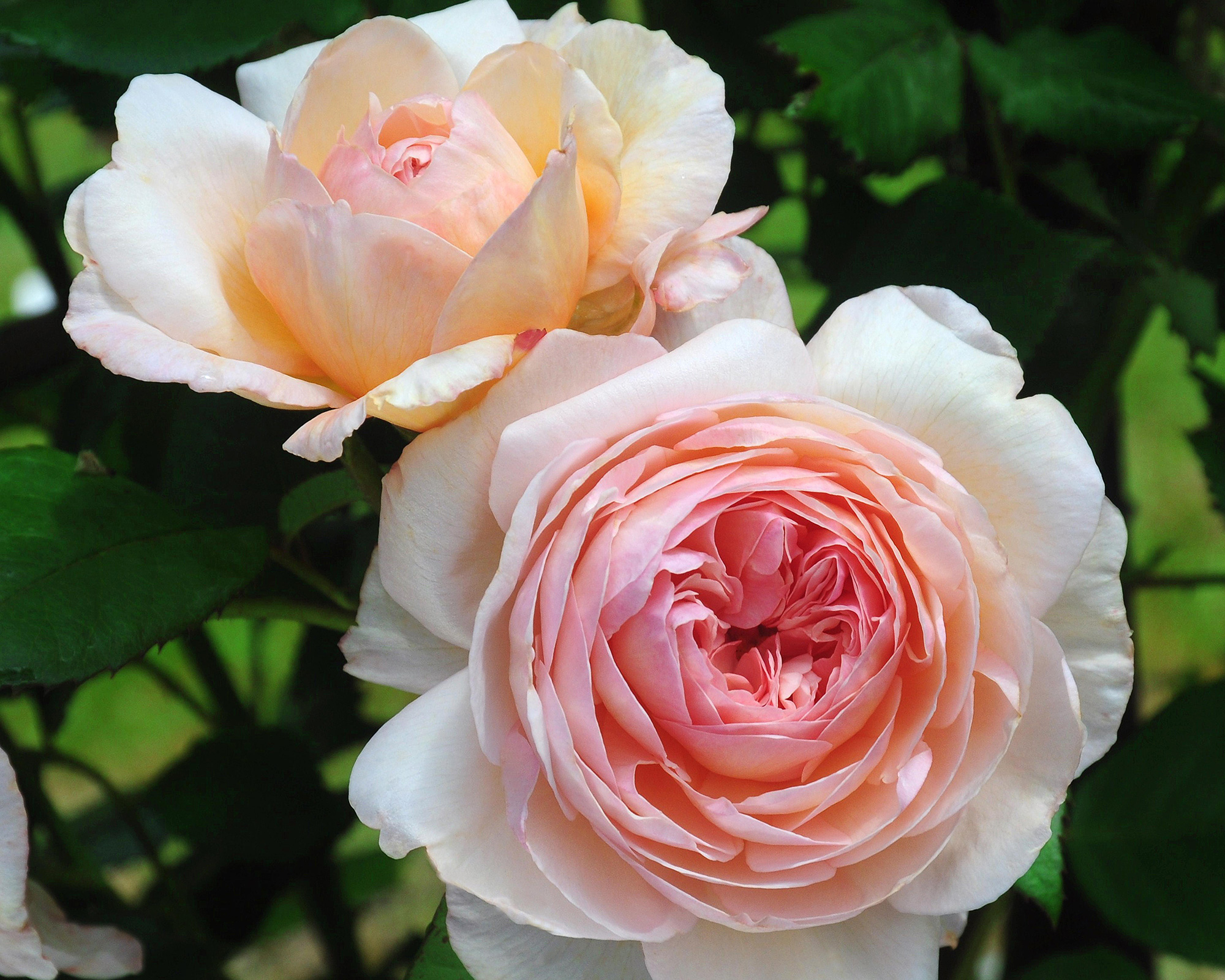
The best climbing roses add a romantic air to a tiny space, and Lizzie Scott of The Rose Press Garden singles out David Austin's 'A Shropshire Lad' from a long list. She likes the large, cup-shaped blooms and fabulously peachy pink color and fruity fragrance.
Use this one to clad a wall, fence or arch, and it will grow vigorously to about 10ft (3m) high. It tolerates all soil types and prefers a sunny site.
20. Clematis
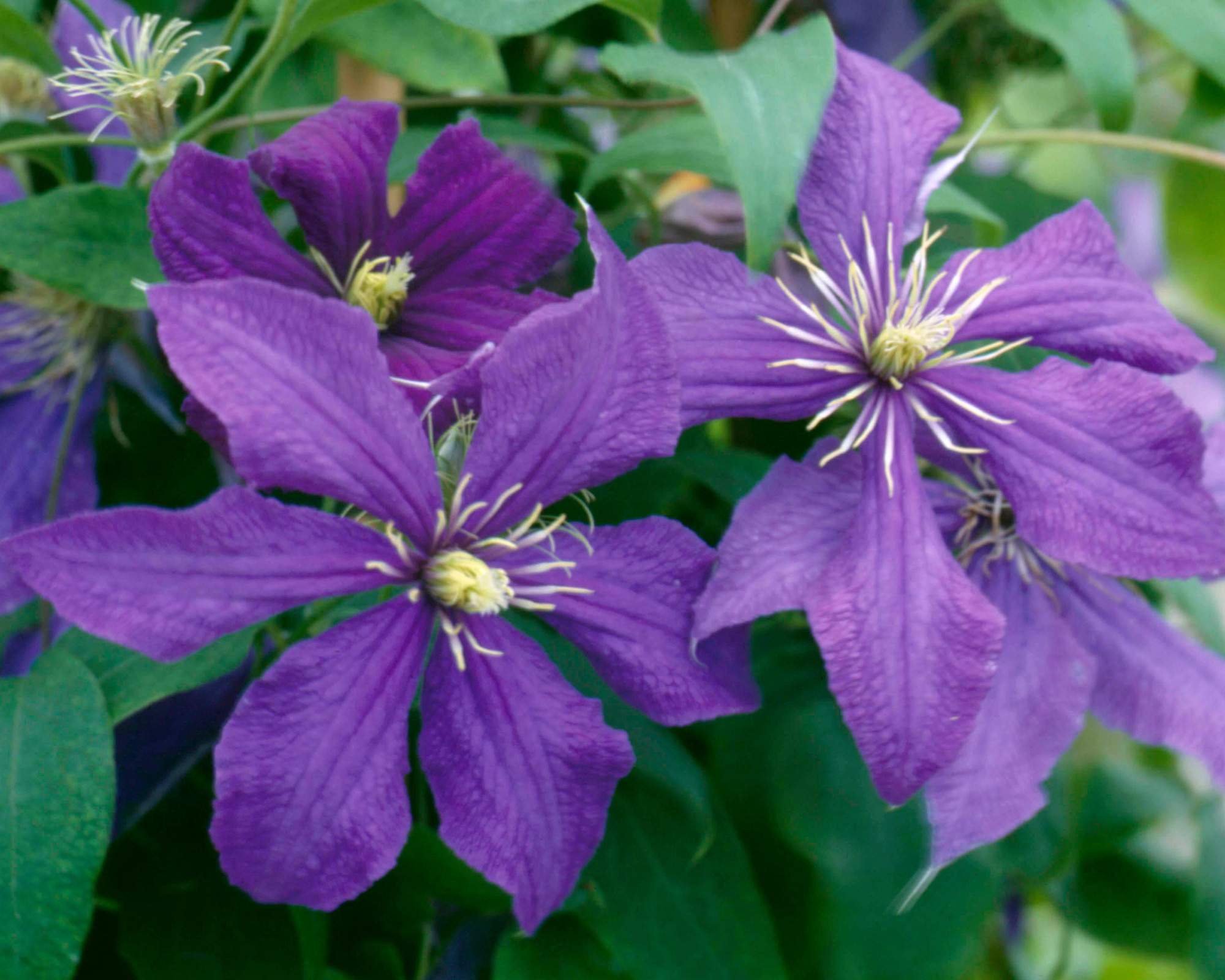
Clematis 'Rhapsody'
Large flowers look effective in small gardens, and this is definitely true of clematis. There are hundreds of different varieties in a kaleidoscope of colors and sizes, but when considering how to grow clematis in a small plot, opt for compact climbers with generous blooms and they'll make a truly stylish splash.
We like clematis ‘Alaina’ which has masses of pink flowers, measuring up to 6in (15cm) in diameter. Shade tolerant and compact, they will grow well in a container, and are shade tolerant. Similarly large flowered, ‘Rhapsody’ is amethyst blue, with contrasting creamy-green stamens. They should flower from early summer to early autumn, and these will also thrive in a container with suitable supports.
21. Honeysuckle
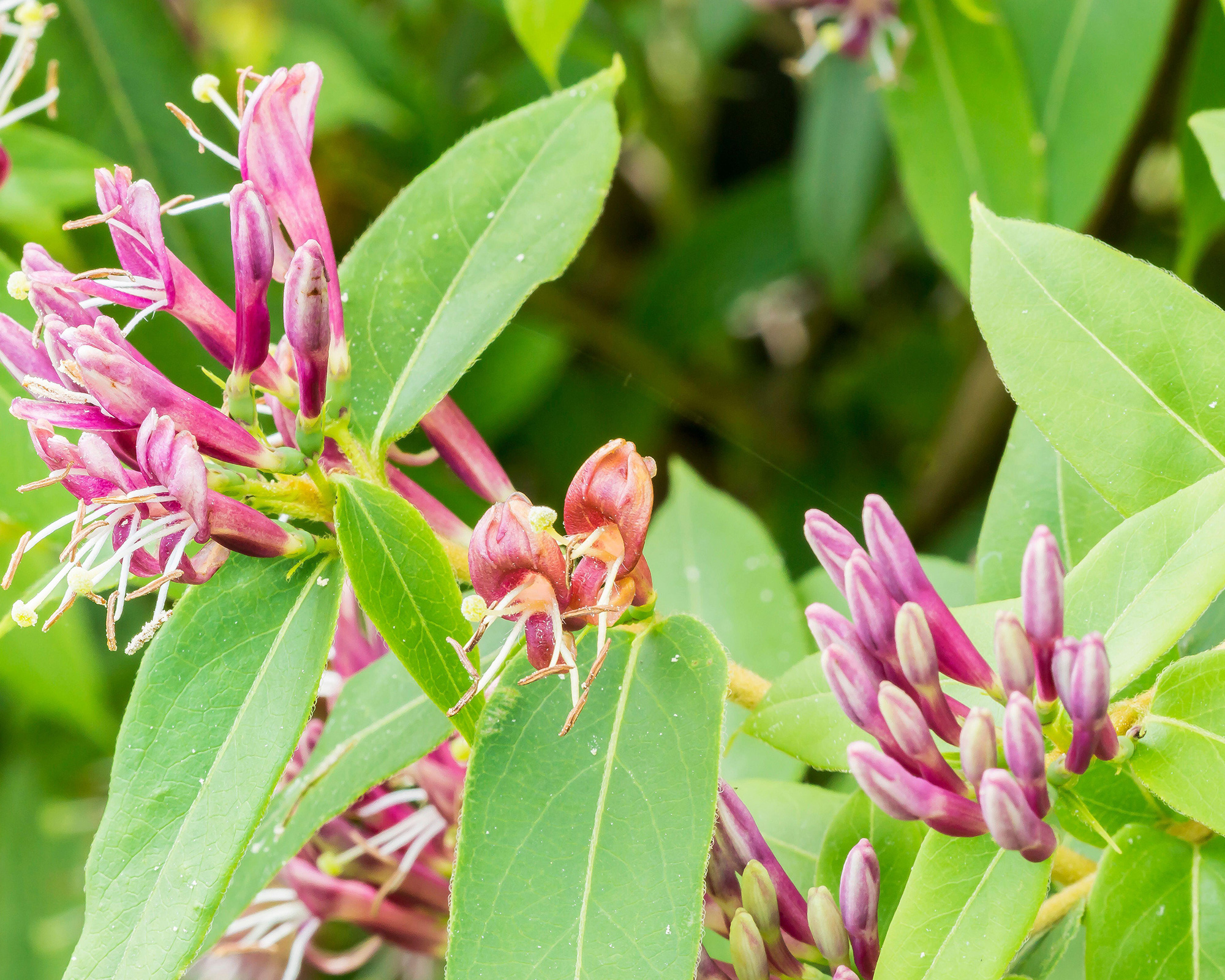
If you have a wall or garden fence that needs covering quickly, planting a honeysuckle against it could be the answer. It makes a good backdrop for other plants, and if you choose an evergreen variety, there’s year-round interest.
Pick a variety with a sweet fragrance too. One of the advantages of gardening in a limited area is that you’ll always be able to smell the perfumed plants. If you're keen to learn how to grow honeysuckle in your small space, try lonicera ‘Henryi’ which has yellow flowers flushed with red and pink on the outside. From the eastern USA, lonicera sempervirens has a beautiful scent, with coral red petals on the outside, with an exotic orange inside. This flowers from May to July and is followed by sticky red berries. It is suitable for hardiness zones 4a-9b.
22. Star jasmine
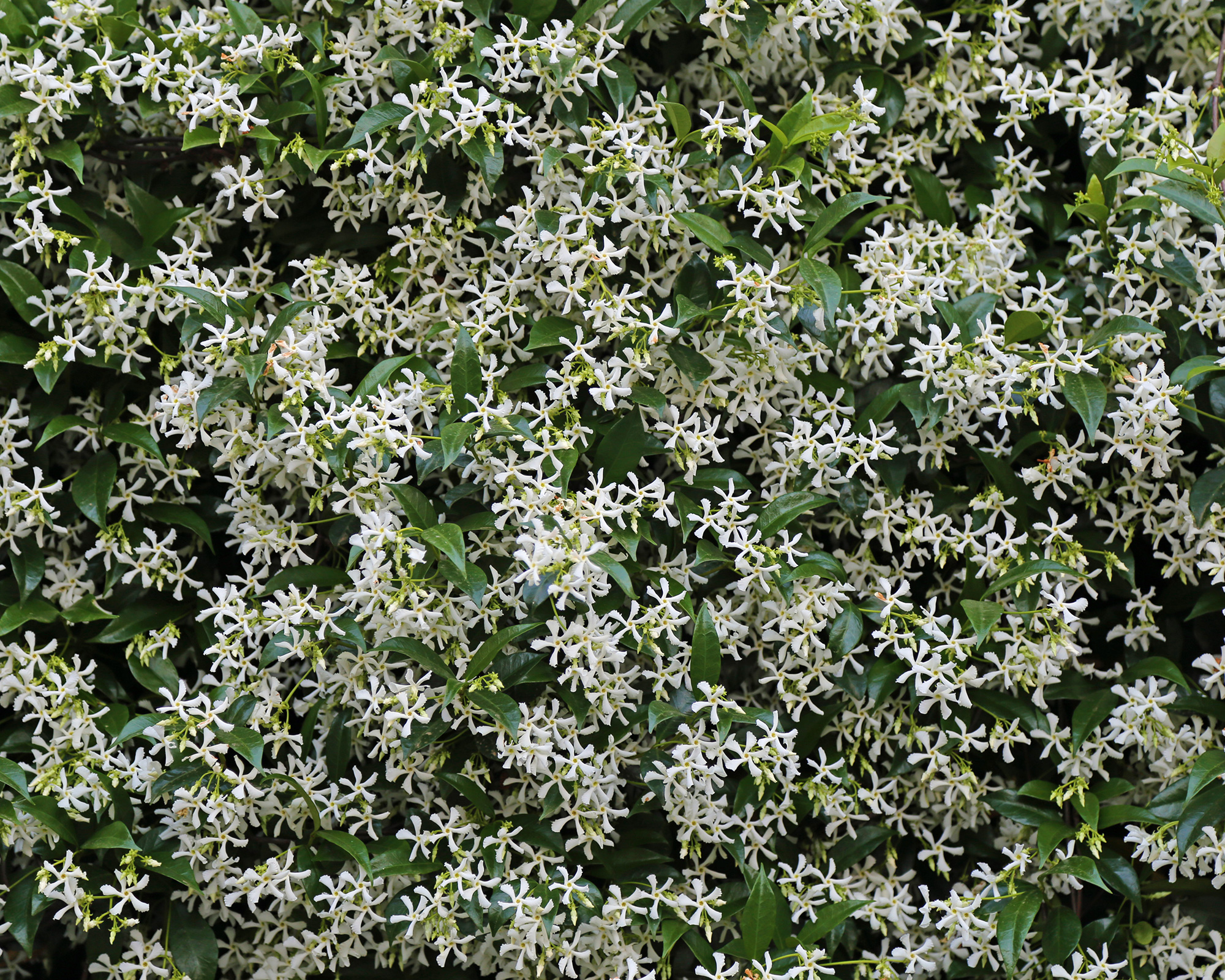
Sweetly scented, with evergreen foliage, trachelospermum jasminoides will neatly cloak walls or trellis in part shade. The starry flower clusters smell glorious on hot summer nights, and in winter, the leaves turn bronze, but won’t drop.
Star jasmine is a twining climber, which grows about 4-8in (10-20cm) a year, so it will not overwhelm a small garden. Plant in the ground or in a garden planter near a seating area to take full advantage of its heady fragrance.
Container grown jasmine needs a large pot and frequent watering to keep the soil moist. In late winter or early spring, add fertilizer and a mulch of well-rotted compost. Thin out the plant after it flowers.
Expert tips for using plants in a small garden
Garden designer David Chanell of Arlo & Bloom has this advice for incoporating the best plants for small gardens into your space.
- 'I try to use plants that offer movement and height such as Verbena bonariensis, or ornamental grasses such as Molinia. Having lots of small plants will make the space feel small and cluttered, but if the plants are too tall and heavy, it will block views, so by using more transparent species that have movement you can height and structure without spoiling the view.'
- 'Rather than trying to follow the usual design rules of planting in groups of threes and fives which are not so easy to accommodate in a small area, I try to find a contrast of textures instead. Mix a strong evergreen such as Pinus Mugo with Geranium Rozanne, or perhaps a Polystichum fern with a delicate erigeron.'
- 'Choose variegated shrubs which add light as well as offering an interesting backdrop to other planting.'
- If your garden has a view, this could also influence plant choices. 'If you're lucky to have a borrowed landscape of trees in the distance, using the same species in a smaller scale in your own garden will link the horizon to your garden and lead the eye further.'
- Another way for how to make a small garden look bigger is to use climbing plants, says David. 'They can help to blur the boundaries of the garden when attached to fences or other structures along the boundaries.'
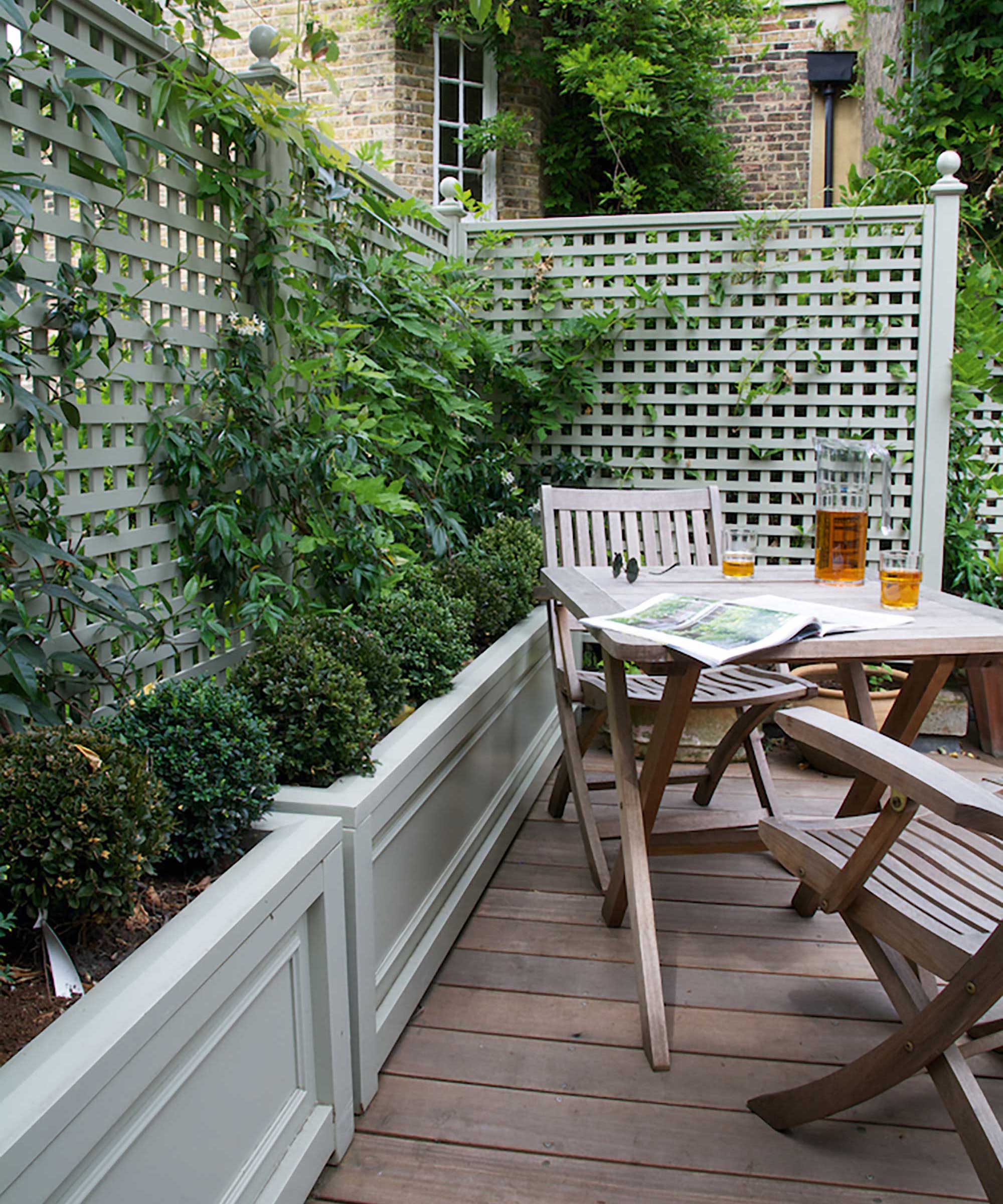
Which plants do garden designers recommend for small gardens?
Lizzie Fox from The Rose Press Garden has these recommendations for the best plants for small gardens.
- 'House leeks (sempervivum) are brilliant for adding to pots outdoors, or lining gravel areas around the house. I love that they are so easy to propagate too.'
- 'Autumn planted bulbs such as tulips and daffodils are brilliant for pots on balcony gardens, or in courtyard gardens. Look out for the double ruffled tulips and the 'replete' pink centred daffodils for something extra special. I also love planting bulb lasagnes (combining different bulbs in one pot), so there is color all the way through spring with crocuses, tulips, daffodils and iris.' You can find plenty of tips on how to make a bulb lasagne in our step-by-step guide.
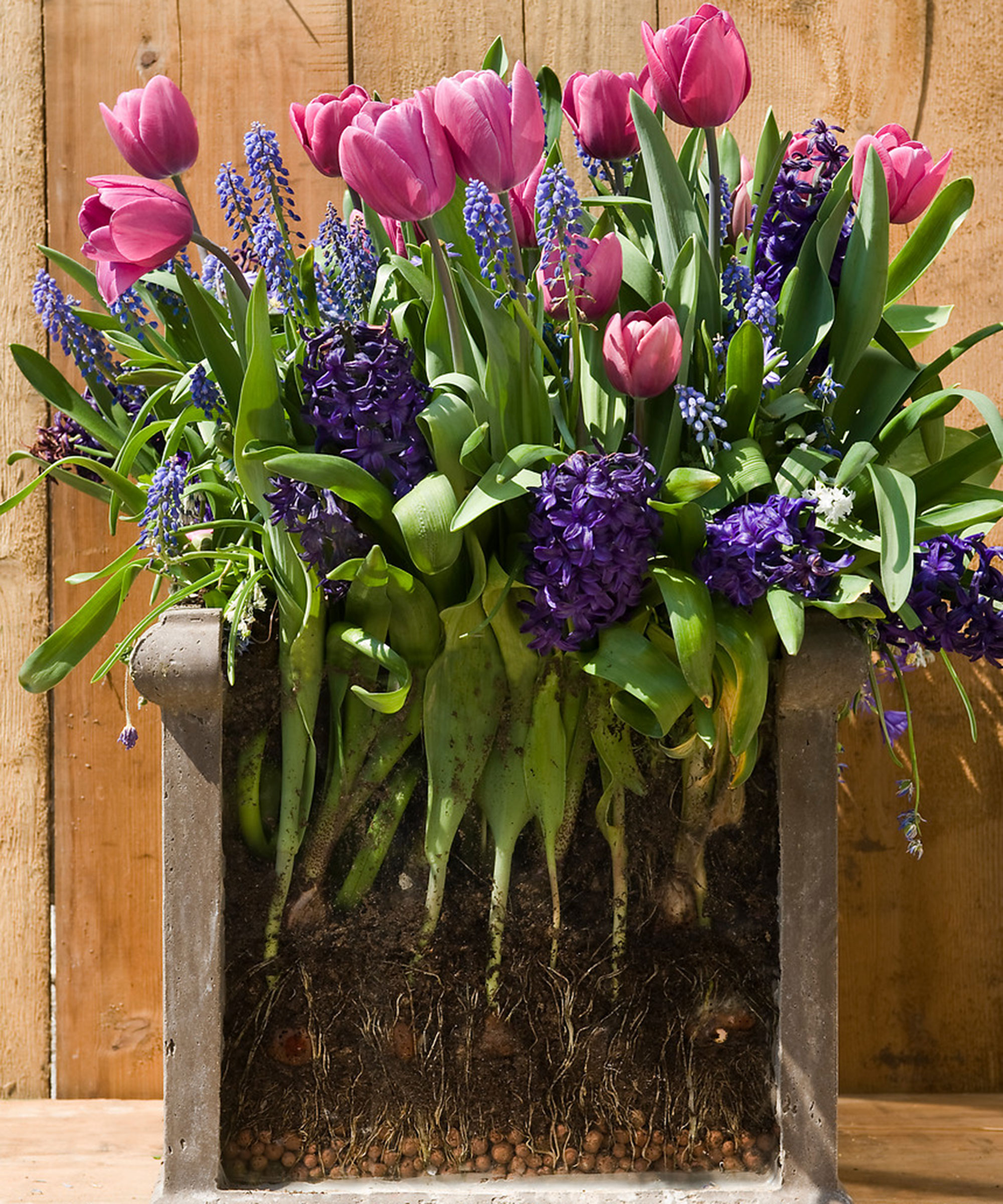

An experienced freelance journalist, editor and columnist writing for national magazines and websites, Fiona now specialises in gardens. She enjoys finding and writing about all kinds, from the tiniest town plots to impressively designed ones in grand country houses.
